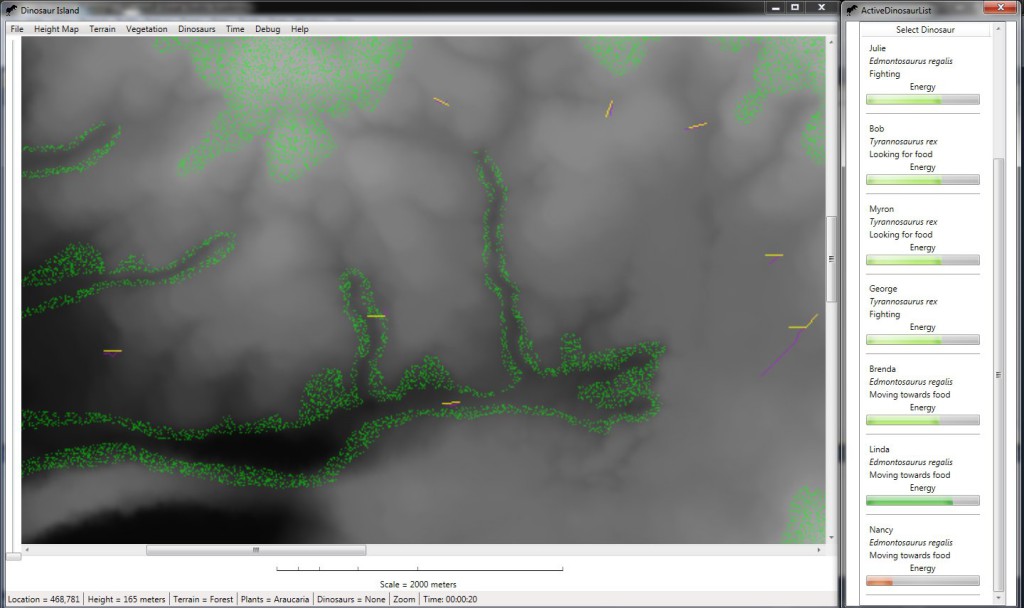Dinosaur Island – which was 2,000 meters by 2,000 meters (2 kilometers x 2 kilometers) just got a little bit bigger. It is now 2,048 meters by 2,048 meters. Why the addition of 2,304 square meters?
Well, the answer to that question goes back to the winter of 1937-38 and a professor from Iowa State Teacher’s College named John Atanasoff. Atanasoff had been thinking about the problem of computation; specifically how he could construct a computer to help with his physics calculations. He decided he wanted a drink but Iowa was a dry state at the time. He drove from Ames, Iowa to Rock Island, Illinois and stopped at the first bar he found across the river.

The Government Bridge between Davenport, Iowa and Rock Island, Illinois as it would have appeared during the winter of 1937-38 when John Atanasoff crossed it looking for a drink.
There is still some speculation as to which bar, or speakeasy, Professor Atanasoff stoped at (personally, I think it was the now closed Hunter’s Club in downtown Rock Island) but while he was there, drinking a whiskey and soda, he sketched out on a cocktail napkin what would be the beginnings of a digital computer using base 2 (or binary) for the number system. Using a binary number system (on or off, 1 or 0) greatly simplified the wiring of such a computer.
Now as we look at powers of 2 we note that 2048 is 211 and is 100000000000 in binary. Because Dinosaur Island is so large (take a look at some new images and a video fly by here) it’s convenient for 3D rendering purposes if we can divide it into equal sized models. Half of 2048 is 1024 (210). And half of 1024 is 512 (29). 1024 is also 1 kilobyte of memory. There are many advantages for using powers of 2 when storing information (like 3D models) in a computer’s memory.
And now you know how a physics professor wanting a drink in the winter of 1937-38 changed the size of Dinosaur Island.





